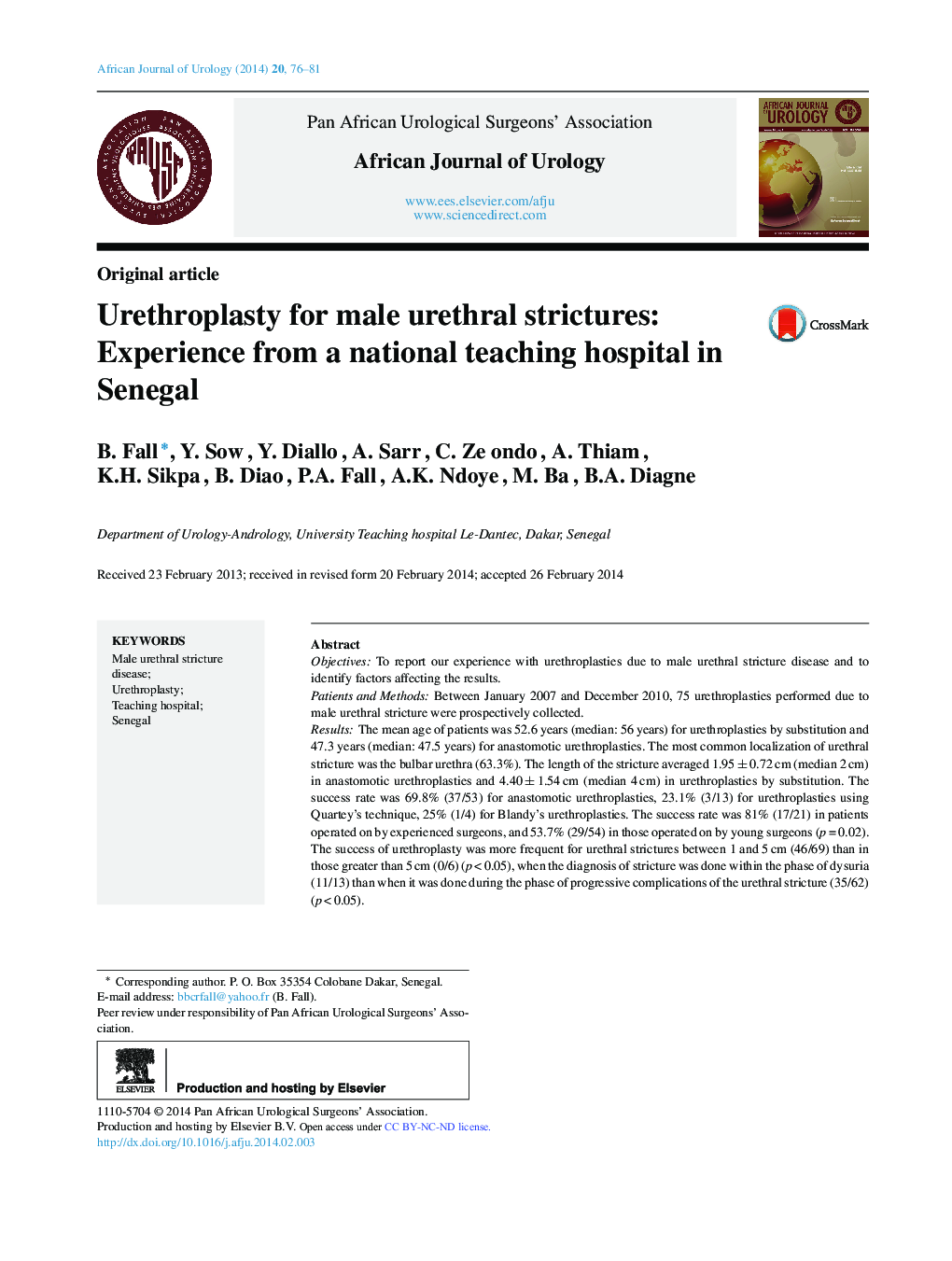| Article ID | Journal | Published Year | Pages | File Type |
|---|---|---|---|---|
| 4267625 | African Journal of Urology | 2014 | 6 Pages |
ObjectivesTo report our experience with urethroplasties due to male urethral stricture disease and to identify factors affecting the results.Patients and MethodsBetween January 2007 and December 2010, 75 urethroplasties performed due to male urethral stricture were prospectively collected.ResultsThe mean age of patients was 52.6 years (median: 56 years) for urethroplasties by substitution and 47.3 years (median: 47.5 years) for anastomotic urethroplasties. The most common localization of urethral stricture was the bulbar urethra (63.3%). The length of the stricture averaged 1.95 ± 0.72 cm (median 2 cm) in anastomotic urethroplasties and 4.40 ± 1.54 cm (median 4 cm) in urethroplasties by substitution. The success rate was 69.8% (37/53) for anastomotic urethroplasties, 23.1% (3/13) for urethroplasties using Quartey's technique, 25% (1/4) for Blandy's urethroplasties. The success rate was 81% (17/21) in patients operated on by experienced surgeons, and 53.7% (29/54) in those operated on by young surgeons (p = 0.02). The success of urethroplasty was more frequent for urethral strictures between 1 and 5 cm (46/69) than in those greater than 5 cm (0/6) (p < 0.05), when the diagnosis of stricture was done within the phase of dysuria (11/13) than when it was done during the phase of progressive complications of the urethral stricture (35/62) (p < 0.05).ConclusionsIn our hands, the results of anastomotic urethroplasty were better, while those of substituting urethroplasties were disappointing. These results are explained by the complexity of the strictures and the limited experience in urethral reconstruction of most surgeons.
